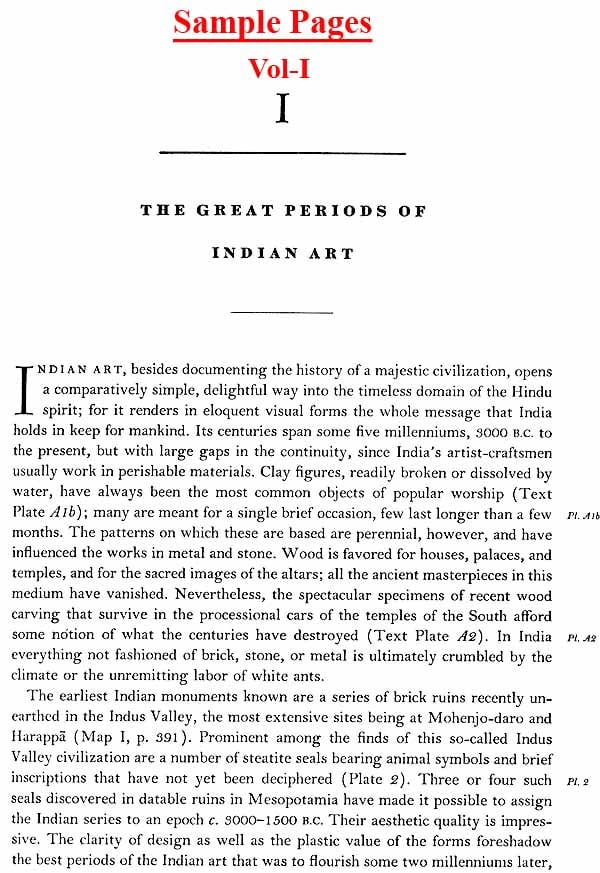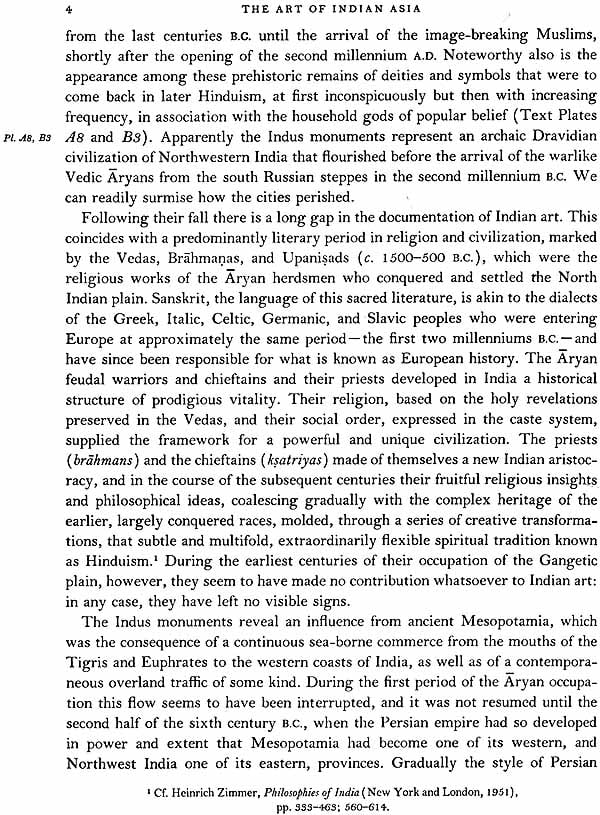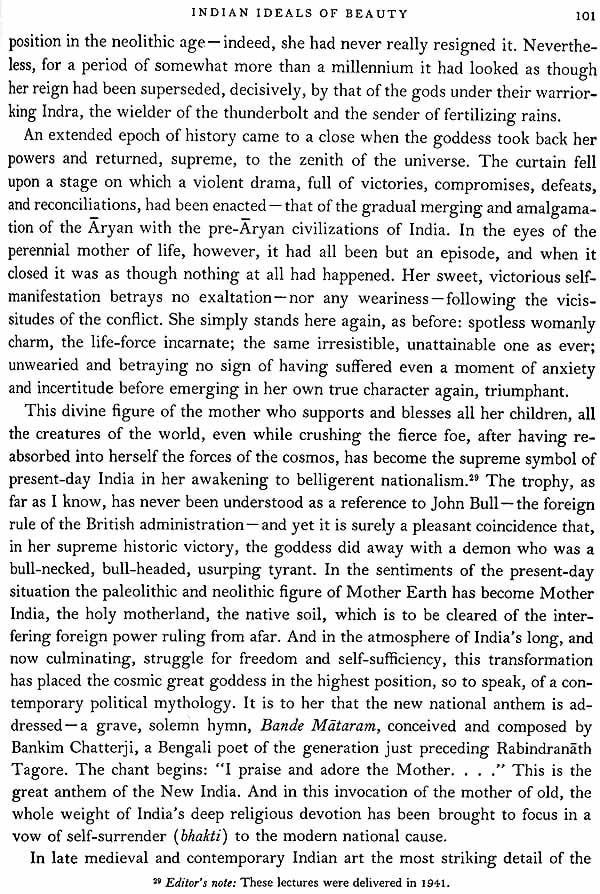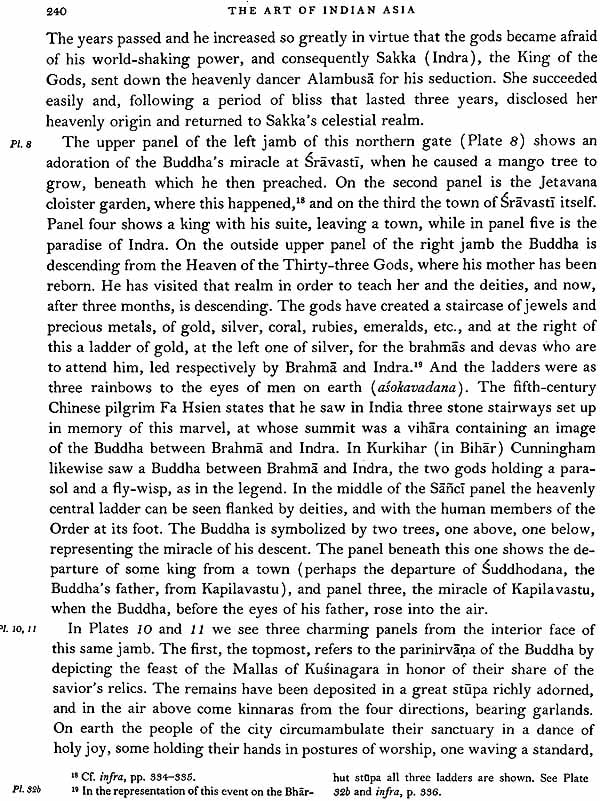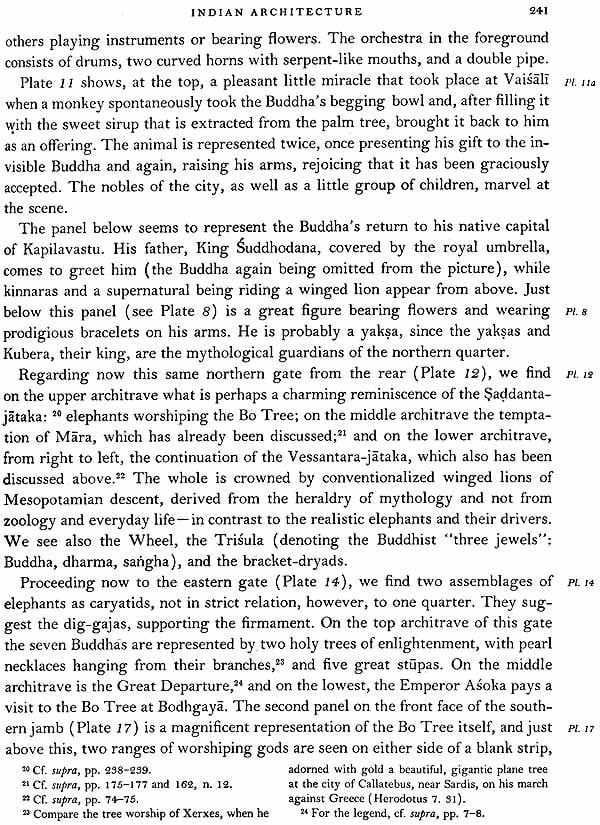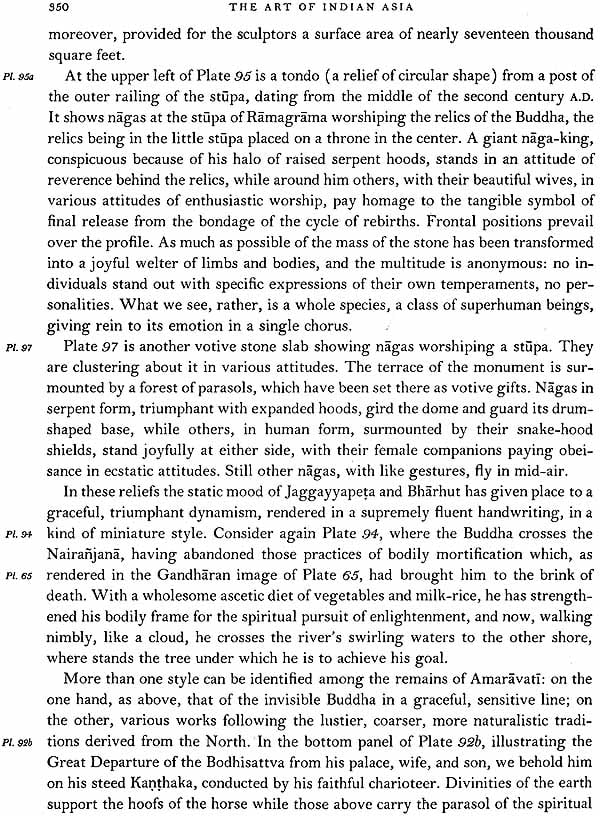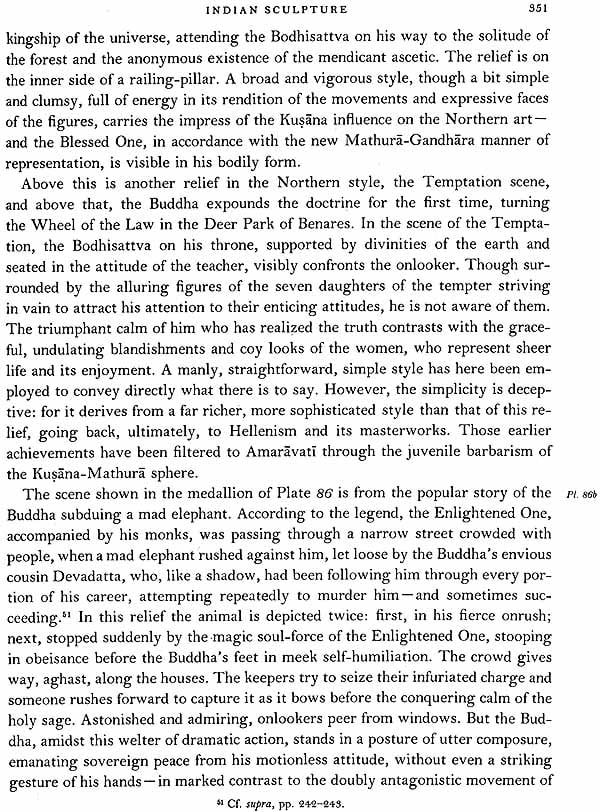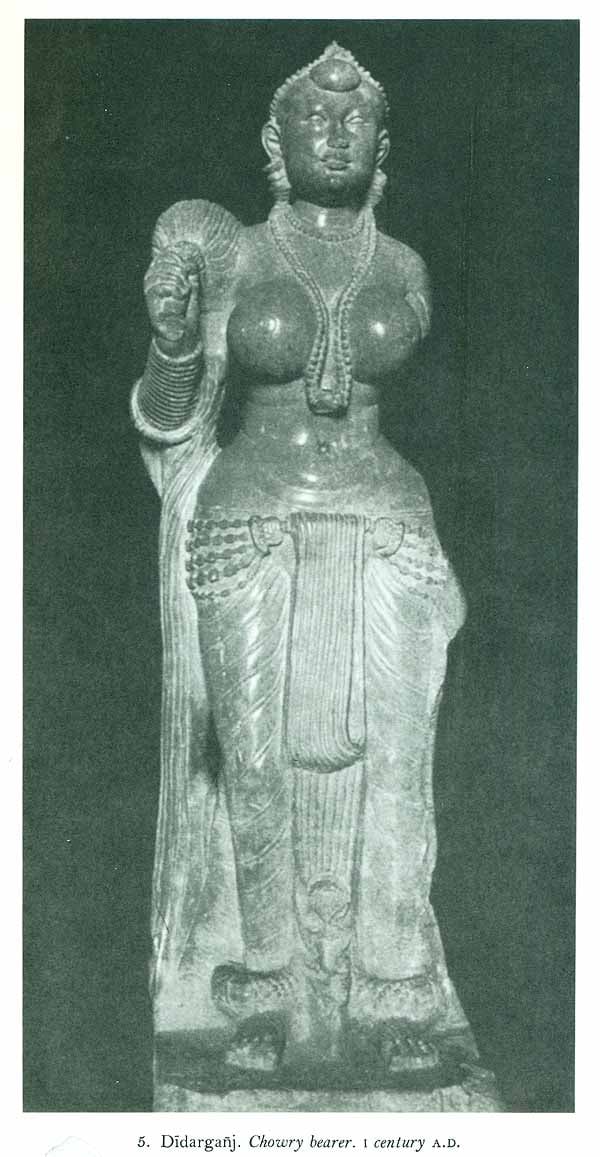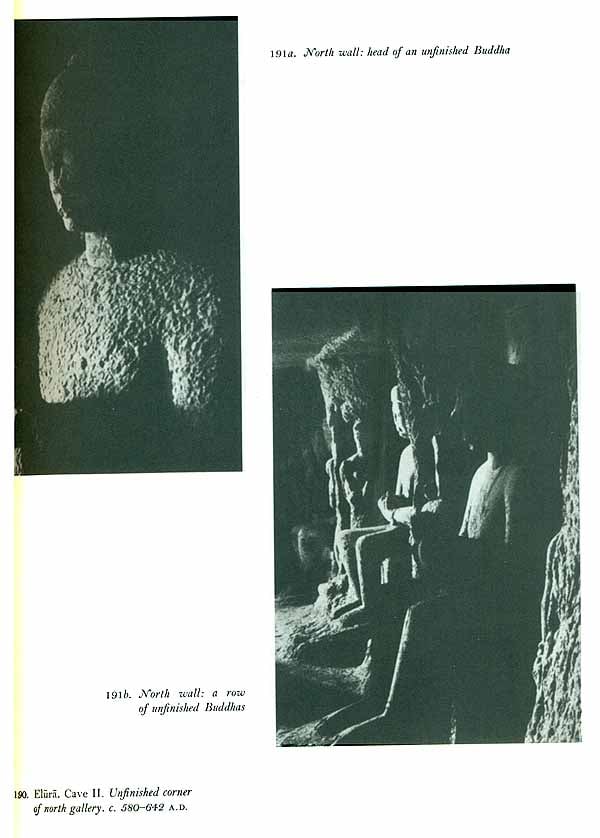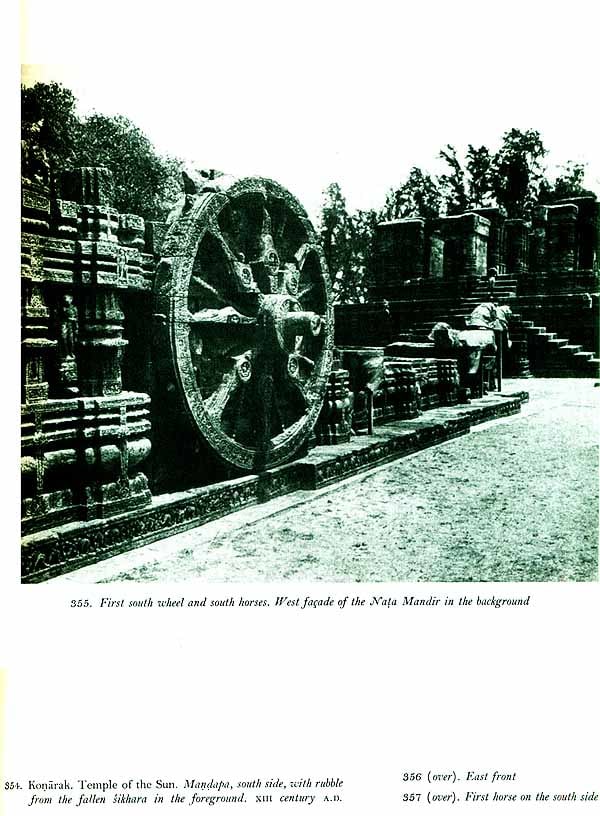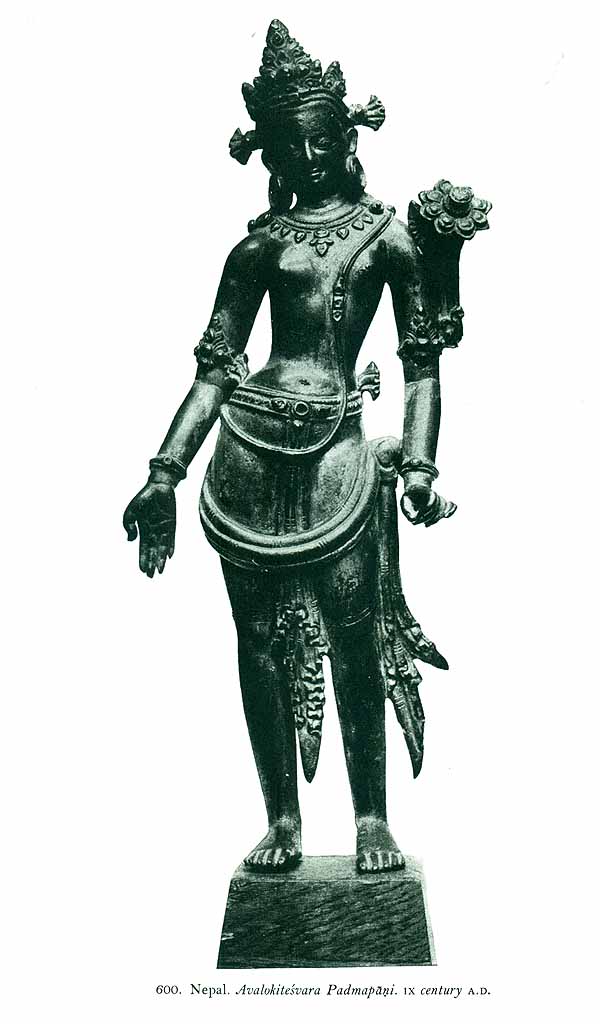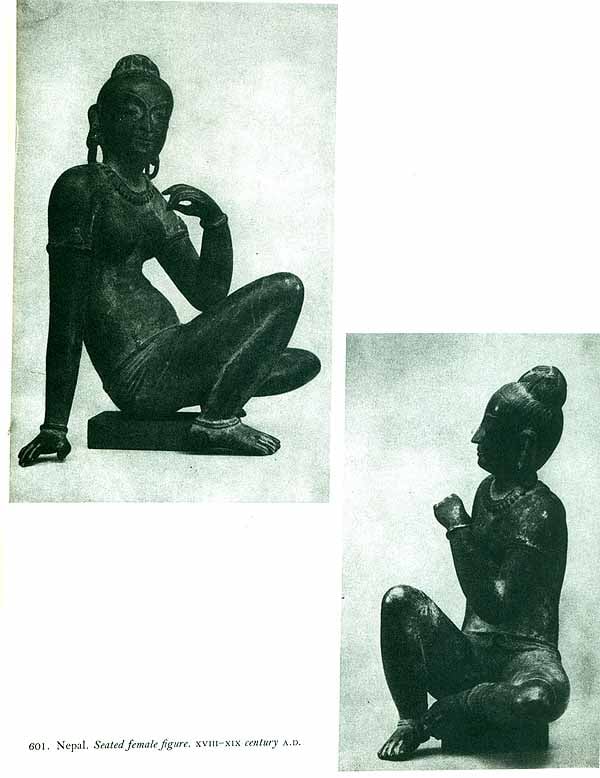
The Art of Indian Asia - Its Mythology and Transformations (Set of 2 Volumes)
Book Specification
| Item Code: | NAH728 |
| Author: | Heinrich Zimmer |
| Publisher: | Motilal Banarsidass Publishers Pvt. Ltd. |
| Language: | English |
| Edition: | 2015 |
| ISBN: | 9788120816305 |
| Pages: | 1079 (Throughout B/W Illustrations) |
| Cover: | Hardcover |
| Other Details | 11.5 inch X 8.5 inch |
| Weight | 3.20 kg |
Book Description
The present work is intended not as a handbook but as an introduction to its subject, to be read from beginning to end. Each section is preparation for the next. Chapter I, presenting as it does a brief historical outline of the transformations of Indian art as well as a key to the symbology of the forms, can be used as a guide during the first perusal of the pictures. For the reader then wishing to find quickly the several portions of text referring to any specific group of monuments, a copious index has been supplied, together with textual references in the Description of Plates and cross-references in the footnotes. Marginal references to the Plates, furthermore, accompany the text. These should make possible an easy and rapid correlation of the materials of the two volumes.
The first two groups of Plates in the text volume illustrate, for the most part, the anthropological and comparative observations of the text. Included among them, however, are a few photographs that are indispensable to Dr. Zimmer's argument but do not meet the aesthetic standard of the Plates volume. On the other hand, the final cluster of text Plates constitutes an independent pictorial appendix, illustrating the miniature and Rajput art of the eleventh to nineteenth centuries A.D. Dr. Zimmer's notes on this subject had not been developed beyond preliminary jottings, and could not be incorporated in any major section of the text. But since there is actually a rather special, very delicate, lyric quality about these paintings on palm leaf and paper, which sets them apart, somewhat, from the tradition of the stone monuments, it is not inappropriate that they should be given a separate place.
HEINRICH ROBERT ZIMMER (1890-1943) was an Indologist and historian of South Asian art. His other works include Myths and Symbols in Indian Art and Civilization and Philosophies of India, Maya : Der Indische Mythos, Philosophies of India, The King and the Corpse: Tales of the Sou's Congrest of Evil. He was the most important German cholar in Indian Studies after Max Muller (1823-1900). In 2010, in recognition to hi contribution in the filed of Indology a "Heinrich Zimmer Chairs for Indian Philosophy and Intellectual History" was inaugurated at Heidelberg university.
Zimmer's method was to examine religious images using their sacred significance as a key to their psychic transformation. His use of (Indian) philosophy and religious history to interpret art was at oods with traditional scholarship. His vast knowledge of Hindu mythology and philosophy (particularly Puranic and Tantric works) gave him insights into the art, insight that were appreciated by Joseph Campbell among others. Cambell edited many of Zimmer's writings after his death.
LIKE Philosophies of India and the other books of the late Heinrich Zimmer published in the Bollingen Series, the present work is intended not as a handbook but as an introduction to its subject, to be read from beginning to end. Each section is preparation for the next. Chapter I, presenting as it does a brief historical outline of the transformations of Indian art, as well as a key to the symbology of the forms, can be used as a guide during the first perusal of the pictures. For the reader then wishing to find quickly the several portions of text referring to any specific group of monuments, a copious index has been supplied, together with textual references in the Description of Plates and cross-references in the footnotes. Marginal references to the plates, furthermore, accompany the text. These should make possible an easy and rapid correlation of the materials of the two volumes.
The first two groups of plates in the text volume (Text Plates Al to Al6 and BI to B16) illustrate, for the most part, the anthropological and comparative observations of the text. Included among them, however, are a few photographs that are indispensable to Dr. Zimmer's argument but do not meet the aesthetic standard of the plates volume. On the other hand, the final cluster of Text Plates (C1 to C16) constitutes an independent pictorial appendix, illustrating the miniature and Rajput art of the eleventh to nine- teenth centuries A.D. Dr. Zimmer's notes on this subject had not been developed beyond preliminary jottings, and could not be incorporated in any major section of the- text. But since there is actually a rather special, very delicate, lyric quality about these paintings on palm leaf and paper, which sets them apart, somewhat, from the tradition of the stone monuments, it is not inappropriate that they should be given a separate place. I am pleased to have been able to incorporate in the dating of the plates the results of Dr. Waiter Spink's researches presented in his doctoral dissertation, "Rock-cut Monuments of the Andhra Period: Their Style and Chronology" (Harvard University, 1954). The lectures of Dr. Zimmer from which Chapters I to VII are drawn were delivered at Columbia University, New York City, in the winter of 1941 and the notes that sup- plied the materials for Chapters VII and VIII were made even earlier: obviously, there- fore, they could not have carried the new dates. I feel strongly, however, that to publish a work at this time with datings accepted by earlier scholars but now disproved would be to limit its usefulness. And since the chronological shift for the period extending from the second century B.C. to the second A.D. does not controvert any of the views and explications of Dr. Zimmer, I have not hesitated to adopt it. Where it has been necessary, in one or two places, to adjust Dr. Zimmer 's paragraphs, I have stated in a footnote that the dating is that of Dr. Spink, not Dr. Zimmer. Otherwise, in my work of compiling and editing, I have held strictly to the line of Dr. Zimmer 's exposition, and I believe that the book represents his thinking throughout. It unites with his Myths and Symbols in Indian Art and Civilization, The King and the Corpse, and Philosophies of India * to present the greatest part of his lectures and writings in English from the time of his arrival in this country in 1941 until his death, March 20, 1943. The four publications are facets of a single vision and constitute, practically, a single work.
Numerous persons and institutions have helped in a great many ways during the preparation of this work. My intention has been to acknowledge every photographic source and to give the location of every object which is in the possession of a museum or a private collection. This information is to be found in the plate descriptions and the index of picture sources. If these compilations should be found wanting, the responsibility is mine, and I should be most grateful to know of any oversights. I want to mention individually a number of persons and institutions that have given me assistance.
For the materials of the plates volume, I am indebted primarily to Mrs. Ananda K. Coomaraswamy and Mr. Eliot Elisofon. Mrs. Coomaraswamy very kindly placed at my disposal the archives of her late husband, and so made it possible for me not only to identify many of the references of Dr. Zimmer 's text, but also to publish otherwise unobtainable illustrations. The camera studies by Mr. Elisofon of Sanci, Ajanta, Elura, Elephanta, Mamallapuram, Bhuvanesvara, Konarak, Tiruvannamalai, and Ankor - which constitute the main body of volume 2 - set a new standard for the photography of Indian art, and I am delighted to have been able to present them as a visual complement to Dr. Zimmer's text. Moreover, Mr. Elisofon made a number of visits to the museums of Europe to obtain illustrations for Dr. Zimmer's discussion. I am very grateful both to him and to M-rs. Coomaraswamy for their unstinting co-operation, and to the Editors of Life magazine, who gave their generous permission for the inclusion of a large number of Mr. Elisofon's hitherto unpublished photographs in the present work, as well as three photographs of Ceylonese monuments by Mr. Dmitri Kessel.
Two other fortunate accessions not only extended the photographic record of the main periods and transformations of Indian art but also provided superb illustrations of some of the major points of Dr. Zimmer 's text. The series by Mme. Gunvor Moitessier, covering the Gupta and Early Calukya monuments of Bad ami, Aihole, and Pattadakal, as well as the temples of Khajur aho, Halebid, Beliir, Vijayanagar, and Nepal, supplements • Respectively, New York and London, 1946; New York and London, 1948; New York and London, 1951. admirably the fundamental series of Mr. Elisofon. Dr. and Mrs. WaIter Spink allowed me to make a representative selection from their fine photographs of the Jaina caves at Khandagiri and Udayagiri, as well as of the temples of Badami, Puri, and Tanjore. I thank these good friends, both for their pictures and for the assistance that they have given me in the organization and dating of various portions of the pictorial material. I thank, also, Miss Katharine Ordway, who introduced me to their work and Mme. Moitessier's.
I should like to express my gratitude for the great assistance that I received from my friend Mr. Nasli Heeramaneck, who permitted me to draw whatever pictures I pleased from his file, gave me advice in the selection and arrangement of the Rajput series, and allowed me to publish photographs of a number of the rare .and beautiful pieces in his magnificent collection. Professor Alfred Salmony likewise opened his files to me and assisted me generously with information. A great many photographs were sent to me through the kindness of Mme. Odette Monod, Curator of the Archives photographiques of the Musee Guimet; she responded repeatedly to my calls for assistance. Dr. Stella Kramrisch kindly sent me the print of the handsome Krsna Kaliyadamana (Plate 423) that she is publishing in her own volume, 'The Art of India (London: Phaidon, 1954), and I wish to thank both her and her publisher for their cordial co-operation. Dr. Benjamin Rewland - on whose valuable work 'The Art and Architecture of India (Harmondsworth: Penguin Books, 1953), I have been greatly dependent-assisted me, at one point, in my search for pictures. Professors Ludwig Bachhofer and Ernst Diez and Sir John Marshall gave me a number of prints that I required, and Professor Bachhofer in addition gave valuable advice in the resolution of certain textual problems. Mr. Martin Hurlimann, from whose India volume, published in 1928 (Indien: Baukunst, Landschaft, und Volksleben, Berlin: Verlag Ernst Wasmuth), Dr. Zimmer had drawn freely in his lectures, sent a series of indispensable and splendid photographs. Moreover, the famous collection of Dr. Zimmer's friend, Eduard Baron von der Heydt, which is now preserved in the Rietberg Museum of Zurich, contained a number of pieces to which the notes referred; and I thank both him and the Curator of the Museum, Dr. johannes Itten, for their very generous help. I was fortunate also in receiving from Mr. Ferenc Berko permission to publish his photographs of South Indian bronzes.
The contribution of Dr. Marguerite Block, Curator of the Bush Collection of Religion and Culture at Columbia University, where Dr. Zimmer lectured during his brief residence in America, is scarcely acknowledged by the credit lines of the photographs drawn from the Collection. She greatly assisted me by identifying many of the objects referred to in Dr. Zimmer's notes. And I should like to express my especial gratitude also to the distinguished Director of the Ecole francaised Extreme-Orient in Hanoi, M. Louis Malleret, who, as late as May 1954, sent me with his compliments photographs of the art of Campa from the archives of the Hanoi Museum.
Contents
| Editor Foreword | v | |
| Description of Text Plates | xv | |
| Description of Text Figures | xxii | |
| Note on Pronunciation | xxiii | |
| I | The Great periods of Indian Art | 3 |
| II | The Indus Valley civilization | 18 |
| III | The Vedic Aryan Style | 37 |
| IV | Mesopotomian Patterns in Indian Art | |
| 1. Gods Standing on Animals | 42 | |
| 2. The Heaven -Bird and The Earth -Serpent | 48 | |
| 3. The Serpent and the Savior | 56 | |
| V. | Indian Ideals of Beauty | |
| 1. A Maurya Mother Goddess | 68 | |
| 2. Paleolithic Mother Goddesses | 69 | |
| 3. Indian ideals of Feminine Beauty | 70 | |
| 4. The Forms of the Great Goddess in Indian Art | 90 | |
| 5. The South Indian bronzes | 110 | |
| 6. The Tantric Influence | 124 | |
| 7. The Jaina Style | 131 | |
| 8. The Art of Java | 134 | |
| 9. Combodian Art | 144 | |
| 10 Compa (Annam), and temper of Indonesian Art | 151 | |
| 11. Bali | 153 | |
| VI. | The Symbolizm of the Lotus | |
| 1. The Lotus Goddess` | 158 | |
| 2. The Lotus support | 168 | |
| 3. The Bodhisattva Lotus -in Hand | 181 | |
| 4. The Lotus in Burmese Art | 190 | |
| 5. The Lotus in Tibet | 194 | |
| 6. The Lotus in China and Japan | 201 | |
| 7. The Lotus Goddess of the Cosmic Sea - and the Palace temple ankor wat | 206 | |
| 8. Excursus: On the content and form of Indian Sculpture | 213 | |
| 9. The Palace -Temple Ankor Wat - and the lotus goddess of the cosmic sea | 226 | |
| VII. | Indian Architecture | |
| 1. The Early Buddhist Stupas | 231 | |
| 2. The Buddhist viharas, Caitayas, and Later Stupas | 246 | |
| 3 The Buddhist Pillars of Victory | 253 | |
| 4. The Sacred Sites of Hindusim | 257 | |
| 5. An Architecture Based on Wood | 259 | |
| 6. The Great Jaina Temples | 269 | |
| 7. The Hindu Temple, Northern Style | 275 | |
| 8. The Hindu Temple. Centreal Style | 278 | |
| 9. The Hindu Temple , Southern Style | 278 | |
| Calukya Dynasty (c 550-750) | 279 | |
| Cola Dynasty (c. 850-1150) | 280 | |
| Pandya dynasty (c. 1100-1350) | 281 | |
| Vijayanagar (c. 1350-1565) | 283 | |
| Madura (Post 1565) | 287 | |
| the Architecture of the south Indian Temple | 287 | |
| 10. The Hindu Cave-temple | 289 | |
| 11. Borobudur and the Architecture of Java | 298 | |
| VIII. | Indian Sculpture | |
| 1. The rules of the Craft | 318 | |
| 2. Bharahut | 325 | |
| 3. the Buddhist Art of Mathura, Gandhara, Amaravati, and Bodhgaya | 337 | |
| 4. Hindu Sculpture | 363 | |
| 5. The Pravincial Forms | 363 | |
| Ceylon | 368 | |
| Indonesia | 368 | |
| further India | 369 | |
| Appendix A: Some Notes on the Art of Painting | ||
| Two Origin Legends | 383 | |
| Pala Painting (c. 730-1250) | 385 | |
| Gujarati (Jaina) Painting (c. 1100-1600) | 385 | |
| Rajput Painting (c. 1550-1850) | 386 | |
| Appendix B. Maps and Chronological Charts | ||
| Chronological chart 1: Periods of Indian Art | 390 | |
| Map I: India | 391 | |
| Map II: Asia | 392-393 | |
| Map III: southeast Asia | 394 | |
| Chronological Chart 2: Provincial Styles | 395 | |
| Description of Pates | 397 | |
| Index of Picture Sources | 431 | |
| General Index | 433 |
